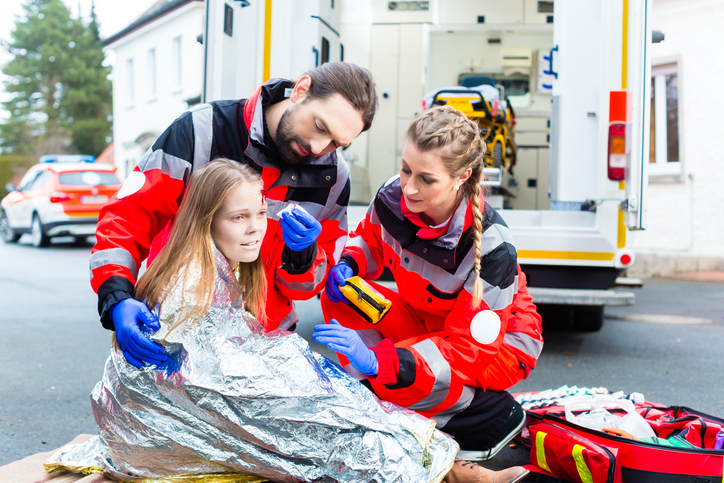Shock treatment: By type + shock first aid
Shock treatment aims to eliminate the underlying cause of shock. If the treatment of the initial problem fails, the shock is insurmountable, deepens and progresses to an irreversible stage.
During a Hypovolemic Shock
The basis is to replenish the missing volume of circulating blood. In the first phase, replacement with solutions (crystalloids, colloids - plasma expanders) is chosen - it is also referred to as volume resuscitation.
Depending on the specifics, a replacement of blood plasma (burns) or erythrocyte mass can be chosen - in case of hemoglobin loss, bleeding.
Of course, in casse of hemorrhagic or traumatic shock, the first thing to do is to stop the bleeding.
During a Cardiogenic Shock
In this case, support for heart function is important.
Drugs with inotropic effects (dopamine, dobutamine), vasopressors (noradrenaline), nitrates (vasodilators), diuretics (drugs to promote urine production), and others are used.
Alternatively, percutaneous transluminal coronary angioplasty or PTCA is carried out. In short, only angioplasty or PCI - percutaneous coronary intervention - is used for infarction.
In more severe cardiovascular disease: a bypass.
Learn more: How to treat a cardiogenic shock.
After an obstructive shock it is urgent to treat it and eliminate the cause. Examples oftreatment include pericardial puncture (suction of blood from the pericardium that oppresses the heart muscle), drainage of pneumothorax (the air in the thoracic cavity that pushes the lungs, blood vessels and heart) or treatment of pulmonary embolism.
During a Distributive Shock
In this case, the choice is to supplement the relative hypovolemia before the solution of vasodilation (vasodilation). Other treatments vary according to the specific type of shock, whether anaphylactic, septic or neurogenic.
Shock: First Aid
It is very difficult and almost impossible to recommend general principles in shock.
Each shock has a different cause, and therefore the principles of treatment or first aid. The appropriate position for traumatic shock is different than for cardiac. There she will help anti-shock and elsewhere in a half-seat.
- take care of your own safety - without a rescuer the victim cannot be saved
- call for help - another rescuer nearby and call the emergency medical service
- 112 - the common emergency number in member states of the EU
- 999 the official emergency number for the United Kingdom
- keep the victim calm
- loosen the victim's tight clothing
- the vistim is bleeding - stopping visible external bleeding
- the victim's position
- if the victim is bleeding
- the victim should be in the supine position + with legs elevated, roughly 30 cm above the plane
- in case of a cardiac arrest: half sitting position
- another forced position that the victim is willing to be in
- if the victim is bleeding
- monitoring and control of consciousness and respiration
- identify other issues, e.g. immobilise the fracture(s)
- keep the victim warm - prevent the victim from cooling off
- do not insert anything into the victim's mouth - no water, food nor medicine
- in case of anaphylactic shock, allergy: apply EpiPen - if the allergy sufferer has it on him/her
- if the victim is unconscious or is not breathing, perform a cardiopulmonary resuscitation (CPR)
- cardiopulmonary resuscitation - chest compressions as a replacement for pump function
- call 999 (from the UK) or 112 (throughout the EU) and follow the correct procedure

Shock and Principles of First Aid
Globally, there is a six step process called D.R.S.A.B.C. or Dr’s ABC – a short but powerful acronym designed to help you:
The 3 priorities when dealing with a casualty are commonly referred to as ABC, which stands for:
- Airway
- Breathing
- Circulation
Table: 5 Principles
| 5 Principles | Description |
| Be quiet |
|
| Keep warm |
|
| No liquids |
even if the victim is thirsty:
|
| Alleviate pain |
|
| Send for Help |
|










